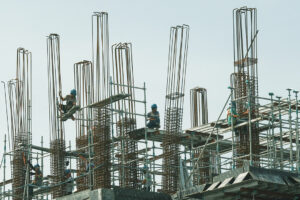At last, I was inducted into the membership of the Management Association of the Philippines (MAP) two days ago, many times postponed because of conflicting schedules. But glad I was because then the keynote speech was delivered by Dr. Robert Klitgaard, professor and former president of Claremont Graduate University who talked about, of all burning issues of the day in the Philippines, “Actionable Recommendations in Reducing Corruption in the Philippines.”
No, I am not about to assess his excellent points, supported by the reactor who was no less than a champion of clean government himself, former Department of Public Works and Highways Secretary Rogelio “Babes” Singson. Once upon a time, he purged the department of corrupt public servants. We need more time and space to give justice to Dr. Klitgaard’s inspiring message that if the Philippines was able to deal with corruption in at least two instances in the past, we can do it again!
But if corruption should persist, and I don’t even attempt to make any judgment on the kind of political candidates who filed their certificates of candidacy (CoCs) from Oct. 1-8, the efforts to address the issue of stagnant growth could be weakened. The reason is the so-called productivity drag which can be minimized if there’s timely and sufficient policy interventions or appropriate breakthroughs in technology. With corruption, the likelihood of both could be remote.
Higher productivity can squeeze more GDP from some given labor and capital, so the economy does not have to be fully dependent on more and more flows of both. Higher growth could lead to higher living standards, higher growth means higher public revenues, stronger soft and hard infrastructure. It’s no longer arguable that if the economy enjoys good public finance, funds are available to bring in new technology and transition to the digital platform. We can even afford to adapt to the imperatives of climate change and renewable energy.
As we wrote in another broadsheet, it is imperative for the Philippines to continue improving on the Government’s maximum target of 8% until 2028. We need to expand the economy much beyond that because of the huge handicap left by the pandemic in 2020, and the large deficit in our efforts to reduce poverty and income inequality. While official targets put us ahead of many countries in the world, we need no less than an economic transformation to allow us to catch up with the other ASEAN 5 countries and break out of the low-middle income group. We have been muddling through this category since 1987.
An interesting article by the IMF’s Nan Li and Diaa Noureldin published in the September Finance and Development and based on April’s World Economic Outlook observed that as of today, productivity growth “has markedly decelerated, accounting for more than half of the decline in global growth.”
In numbers, annual productivity growth in advanced economies declined from 1.4% in 1995-2000 to only 0.4% after the pandemic. Emerging markets, and they include the Philippines, saw their productivity drop from 2.5% to 0.8%. As the two economists described, “the situation is even grimmer for low-income countries, where productivity growth nose-dived from 2% in 2001-2007 to nearly zero after the pandemic.”
So, what drives productivity?
For Li and Noureldin, two main factors drive productivity growth: within-firm improvements and economy-wide allocative efficiency. The first is achieved when better technology is harnessed, management practices are enhanced, and innovative processes are adopted. It’s technology, management, and innovation.
We have seen that the rapid migration of top engineers and data scientists from and to the Googles, Apples, Microsofts, and Huaweis of this world is in itself a race for talent and productivity. Tech literature is replete with stories that document the importance of tapping research and technology. Corporates are enabled to create new products and services, or reinvent existing ones, allowing them greater market share and improving their global competitiveness.
What is sad about the Philippines is that we badly need cheap and reliable energy which could drive both technology and industrial growth. ICT services are not only slow, but they are also uneven. The penetration rate of internet services continues to be low which compromised the learning process of our young pupils during the pandemic. With scarce internet coverage, the cost of access is not exactly affordable. Based on the GSM Association (GSMA) Connectivity Index, the Philippines has shown constant improvement since 2014 on the key areas of infrastructure, affordability, consumer readiness, and content and services. Yet, the rate of improvement is so glacial that for seven years, the country has remained a “transitioner” and one of the lower-scoring in the region.
And here’s the catch: the IMF economists raised the issue of returns on investment in research and development (R&D). Yes, it’s surprising to know that the returns are diminishing. They cited the case of the semiconductor industry where more researchers were reported to be needed to double the density of chips. This seems to be true for the other sectors including ICT where the rapid gains in profitability flattened since the early 2000s.
The second driver therefore is indispensable, and this is allocative efficiency. This is all about allocating scarce resources across business for their most productive use. As Lin and Noureldin argued “this process ensures that the best businesses thrive, while less efficient ones exit the market.” Sounds heartless but in the long run, that is how to create public goods.
The situation in the Philippines in this respect is very challenging. The economy is not well diversified — whether in terms of regional growth and sources of national growth. Economic activities are highly concentrated in Luzon out of the three main islands, and in Luzon, mainly in the National Capital Region. There has been slow labor transition from agriculture, the pace and depth of manufacturing growth can be increased many times over. Instead of manufacturing, wholesale trade, real estate and financial services are preponderant.
And what is the catch for this second driver of productivity?
Believe it or not, despite the new technology and proliferation of various economic and business laws — or perhaps because of these — misallocation of capital and labor has actually increased! It is claimed that such misallocation has dragged down productivity growth by an annual average of 0.6 of a percentage point. Productivity losses because of resource misallocation are due to economic frictions such as regulatory barriers, rigid labor markets, access to finance, and illiberal trade. These are mainly structural issues that could be mitigated by targeted policy interventions.
Without them, and in the flattening of returns on investment in technology, the IMF economists proposed that global growth could be stagnant at 2.8% by the end of this decade, or one percentage point from pre-pandemic level.
Specifically, how does one address the issue of resource misallocation?
Lin and Noureldin suggested a few pathways. Reduction of barriers to market entry and promoting competition is one. What the Philippines started in the early 1990s in industry deregulation and liberalization of foreign trade are steps in the right direction, but more needs to be done. Financial markets can be liberalized, as has been pursued by the Bangko Sentral ng Pilipinas in the last 20 years. Access to funding at market cost should be as wide as possible to encourage business innovation and expansion. Reducing labor market rigidities is another indispensable policy action. Facilitating labor mobility across economic sectors will likely result in a better match between labor supply and demand. Overall productivity is likely to increase.
Finally — and this is where we shall pick up next week — institutional barriers have to be strongly dealt with in order to achieve long-term growth. “Issues such as corruption and weak property rights must be tackled through effective governance and institutional reforms.” We need even-handed regulations and best market practices to create a conducive environment for attaining higher and higher levels of productivity. Encouraging an ecosystem for technological innovation and adoption should lead to more efficient and competitive operations.
The IMF economists concluded their interesting paper by proposing a thought experiment. This would involve every country in the world closing their gaps with the best economic performers in terms of labor market flexibility, financial market liberalization, and regulation of certain product markets. They project that if this were to be done by at least 15%, something that seems achievable given the past performance of many economies, they wrote “the drag on annual productivity growth from allocative efficiency could be eliminated, reversing the decline in productivity and boosting growth.”
For obvious reasons, we cannot always have more labor and more capital at any instance. Paraphrasing that famous quote about working capital, labor and capital are like your diet; if you do not manage them, then they can kill you.
Diwa C. Guinigundo is the former deputy governor for the Monetary and Economics Sector, the Bangko Sentral ng Pilipinas (BSP). He served the BSP for 41 years. In 2001-2003, he was alternate executive director at the International Monetary Fund in Washington, DC. He is the senior pastor of the Fullness of Christ International Ministries in Mandaluyong.















